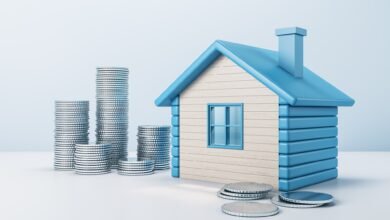6 Ways to Detect Mold Infestation in Your Home

Inside the cozy confines of your home, a sneaky intruder might be present: mold. This hidden culprit usually stays out of sight, blending into the background. But worry not.
By staying vigilant and applying the practical tips that follow, you can uncover its presence and address the situation before it escalates into a more significant problem.
Visible Signs
Mold often doesn’t go unnoticed; it can boldly declare its presence. Stay vigilant, keeping a keen eye out for discolored patches on walls, ceilings, or even your beloved furniture. Mold can exhibit a spectrum of colors, spanning from black and green to brown.
Resist the urge to brush off these spots as mere discoloration; they might be the first observable indicators of a potential mold issue. In such instances, considering professional mold remediation is a prudent step towards comprehensive and effective resolution.
Musty Odors
Have you ever found yourself in the presence of a lingering, musty smell, defying easy identification? The elusive culprit might just be mold. Emitting a distinct earthy, damp odor, mold tends to gravitate towards areas such as basements, bathrooms, or concealed spaces under sinks.
Should you find yourself confronted with a persistent musty scent, consider it a clear cue to delve even deeper into the investigation, exploring potential hidden corners where mold might be taking refuge.
This heightened awareness is crucial in your proactive approach to maintaining a healthy living environment, and if needed, seeking professional mold remediation can be a decisive step in addressing the issue comprehensively.
Water Leaks and Stains
Mold revels in moisture, transforming damp areas into ideal breeding grounds. Regularly inspect for water leaks, particularly in zones prone to dampness like basements and bathrooms.
Stains on walls or ceilings, accompanied by peeling paint or wallpaper, may signify water intrusion. Swiftly addressing these issues can thwart mold from establishing a foothold.
Allergies and Respiratory Issues
Your body could be subtly signaling the presence of mold. Unexplained allergies or respiratory issues that impact you or your family members might be linked to mold exposure.
Keep a vigilant eye out for symptoms such as sneezing, persistent coughing, itchy eyes, or nasal congestion. If these symptoms worsen while you’re at home, it serves as a clear sign to actively investigate potential mold sources, ensuring a proactive and health-conscious approach to your living environment.
Professional Mold Inspection
When uncertainty lingers, enlist the expertise of professionals. A mold inspection by specialists can offer a thorough assessment of your home’s mold situation.
These experts are equipped with the knowledge and tools to identify hidden mold, even in the most inaccessible corners. This proactive approach can spare you from grappling with more extensive damage down the line.
Condensation and Humidity
Elevated humidity levels create an environment conducive to mold growth. Invest in a hygrometer to monitor humidity levels within your home, aiming for an optimal range of 30-50%.
Condensation on windows, mirrors, or cold surfaces is a clear indicator of excessive humidity. Introduce proper ventilation, employ dehumidifiers, and promptly fix any leaks to help keep mold at bay.



